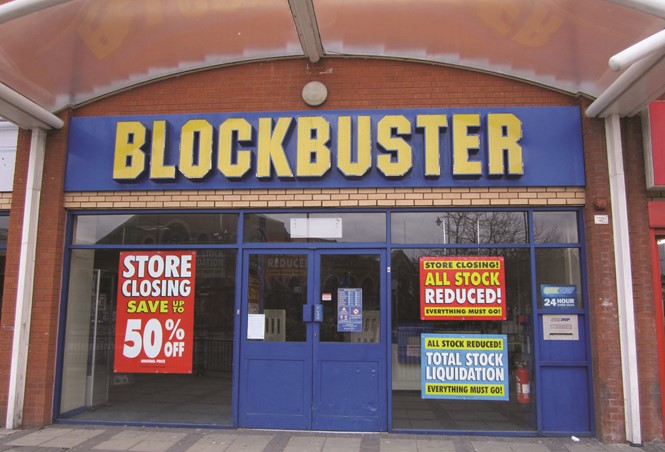Rewind: Blockbuster

A former household name, poor customer experience and inflexibility in its brand resulted in end credits for Blockbuster. What changes would brand experts make if they could have saved the chain?
James Turner, creative director, Moonpig
Removed hindsight is an easy position to come from, but if Blockbuster was, for example built around ‘making it as easy as possible for everyone to get the entertainment they want when they want it,’ maybe it would have driven more innovation and freed the thinking beyond physical formats and stores. A brand with this thinking at its heart would never let its profits rely so heavily on the one thing customers hated about Blockbuster more than anything else – the dreaded late fees.
There was nothing enjoyable about the retail experience. Browsing physical formats is more pleasurable than scrolling on a screen, but Blockbuster never made the most of this opportunity for curation, knowledge and recommendation. This potential personal touch combined with a more customer-focused retail experience and its massive membership base could have set it up nicely for a move to into the brave new digital world.
The rot set in long before the brand rejected the opportunity of a partnership with the fledgling Netflix and appeared to be oblivious to where the industry was rapidly heading. Customers were always going to jump at the slightest chance of more convenience.
Tom Adams, senior consultant, Dragon Rouge
As with many defunct businesses, Blockbuster’s fatal mistake was to define itself by how it did what it did, not why it did it. Due to its size and scale it was overly focused on maintaining a business model it saw as unassailable. Then the model was disrupted, customer expectations shifted and the rest – and Blockbuster is history.
The Blockbuster brand was built on the promise of bringing onscreen entertainment into the home, but it failed to challenge itself on how best to deliver on this promise – its experience, its product and its identity.
It was a slow adopter of online ordering (considering Netflix was founded on this principle in 1997!) and in cutting out the physical-media middle man all together as the screens people watched on changed hugely, with internet enabled devices large and small. As it desperately scrambled to follow innovators like Netflix and LoveFilm into online streaming, it appeared old fashioned, out of date, and out of step with the needs of its customers, both in its actions and its appearance (its logo remains a representation the wrapper that appeared on its rental cassette boxes).
Even as it developed online services that provided a better user experience, the picture in customers’ heads when they thought of Blockbuster was the frustration of driving for 15 minutes to a store, only to find that they had no copies of ‘Independence Day’ available and having to settle for ‘The Island of Dr Moreau,’ a decision that the store clerk would judge you on with a sigh and an eye roll.
In addition to failing to evolve its service quickly enough, it needed to revolutionise its reputation. You could argue it was too far behind the game at that point for an identity makeover to pull them out of their troubles, but the same flaw affected both aspects of its business. It was complacent, inwardly focused and ambivalent to change.
Tom Fraser, public relations specialist, Voices.com
Blockbuster’s downfall was largely self-inflicted. It was, at the height of its success, the hub for film, TV, and entertainment. Families would make a trip to one of the thousands of stores on a Friday night, renting three or four titles to get them through the weekend. A library for movies – what an innovative idea!
Except Blockbuster forgot to continue innovating that idea. Companies like Netflix have gone further by existing on our laptops and mobile devices, curating lists of TV shows and movies that it thinks its users will like, and creating its own award-winning content.
Had Blockbuster purchased Netflix when it had the opportunity in 2000, the famous red ’N’ may very well be a blue and yellow ‘B’ today. By branding itself as the knowledgeable expert of the film industry, using customer data to give recommendations to members, and continuing to innovate its great idea of providing access to thousands of titles, Blockbuster may have thwarted its competition and survived an abrupt fall from grace.












